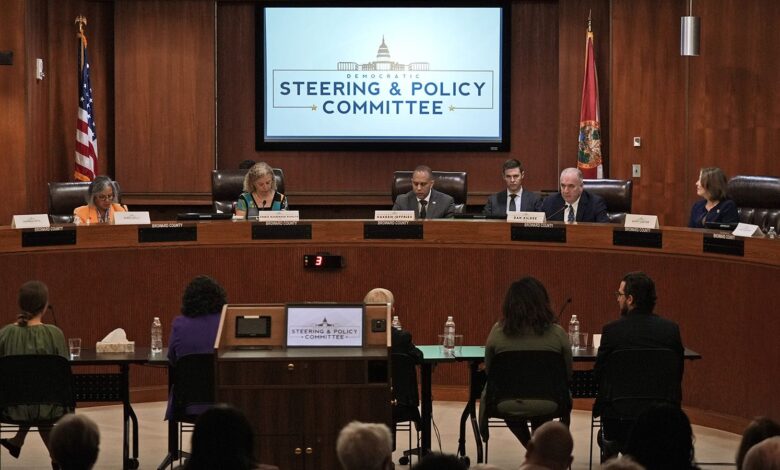Florida’s Stricter Ban on Abortions Could Put More Pressure on Clinics Elsewhere

— The closest practical option might be several states away
by
Associated Press
April 3, 2024
The drive to Bristol, Virginia, from Jacksonville, Florida, takes more than 8 hours. It’s over 10 from Orlando and closer to 14 from Miami. Despite that distance, Bristol Women’s Health Center is preparing for an influx of women from Florida seeking abortions when a stricter ban kicks in next month.
For many people who otherwise would have obtained abortions in Florida, the clinic in southwest Virginia will become the closest practical option — as it already is for a swath of the South after a Florida policy change is expected to resonate far beyond the state’s borders.
“The majority of the patients we do serve are coming from banned states,” said Karolina Ogorek, the clinic’s administrative director. “I think that Florida will just become another one of the states that we serve.”
On Monday, the Florida Supreme Court upheld the state’s ban on abortion after 15 weeks of pregnancy. That step allows another, stricter ban to take effect on May 1, making abortion illegal in the state after 6 weeks’ gestation — before many women realize they’re pregnant. The ban includes exceptions for pregnancies caused by rape, incest, or human trafficking, or that threaten the life or physical health of the woman and for fatal fetal anomalies.
In a separate but closely related ruling, the court also allowed a referendum that will let the state’s voters decide in November whether they want an amendment to the state constitution allowing abortion until viability.
Stephanie Loraine Piñeiro, executive director of the Florida Access Network, which helps pay for abortion care for Florida women, said that the law coupled with a 24-hour waiting period for abortion will be a “total ban” in practical terms.
And getting to a provider elsewhere, she said, will drive the average cost of abortion — including transportation, lodging, meals, child care, and clinic fees — to around $4,000, about twice what it is now. That will strain organizations like hers, which already often hits its budget limit well before the end of the month, as they shift to helping people get care elsewhere.
That could strand people who can’t get time off work, afford travel, arrange child care, or lack documentation to travel, Piñeiro said.
“The people who are most marginalized are going to continue to not have access,” she said.
She said she expects some of the state’s clinics to close for lack of patients.
Currently, the average distance to a facility that provides abortion for Florida residents is 20 miles (32 kilometers), said Caitlin Myers, an economics professor at Middlebury College in Vermont who studies the impact of abortion bans. But when the new ban takes effect, the average distance to one that offers abortion after the first 6 weeks of pregnancy will be 584 miles (940 kilometers).
And that only gets patients to North Carolina, where two in-person visits are required 72 hours apart to receive an abortion — and only for the first 12 weeks of pregnancy in most cases.
It’s more than 100 miles (160 kilometers) farther to Virginia.
Some areas already have long drives to the nearest abortion providers — 8 hours from San Antonio, Texas, to Santa Teresa, New Mexico, for instance, and 9 from New Orleans to Carbondale, Illinois, or Houston to Wichita, Kansas. But the geography will make South Florida the most highly populated place in the U.S. that’s farthest from in-person abortion access past the first 6 weeks.
Georgia and South Carolina, which have bans that begin after about 6 weeks and Ohio, which had a similar one for a time, have seen in the neighborhood of half as many abortions with those policies in effect. Some people are able to obtain abortion close to home earlier in pregnancy rather than traveling.
It’s not only Florida residents who will be affected by the new ban.
“Florida is a really important state for Southern abortion access, and it has been a state that has experienced a surge in travelers from Georgia and Alabama, Mississippi, Louisiana who are traveling out of those states, avoiding near total or 6-week bans to facilities,” Myers said.
Of the 84,000 abortions provided in Florida last year, about 7,700 were for people who live out of state. Now most of those patients will travel farther for access, too.
The total number of abortions in the country has been roughly stable since the U.S. Supreme Court overturned Roe v. Wade and ended a nationwide right to abortion in 2022. But the details have changed.
Far more are provided by pills rather than surgery, with a major increase in prescriptions through telehealth — including to patients in states with bans from providers where laws seek to protect such prescriptions. But there could be legal tests of whether those protections are valid. And the U.S. Supreme Court is already considering an effort to roll back approvals for one of the two drugs usually used in combination for medication abortion.
Planned Parenthood centers in Florida have been preparing for the stricter ban to take effect. Laura Goodhue, executive director of the Florida Alliance of Planned Parenthood Affiliates, said they’ve implemented rapid blood tests to determine pregnancy earlier, increased education and contraception programs, and ramped up efforts to help people travel elsewhere for abortion.
“We’re doing what we can,” she said. “But as we’ve seen in other states, it’s still going to have a devastating impact on our public health system.”
Since states began enforcing bans after the 2022 ruling, the Bristol clinic has added appointment slots in afternoons, Saturdays, and some Sundays — and has adjusted to the idea that patients could be late because of traffic jams as far away as Atlanta.
“In order for them to come to Virginia, there’s a lot of planning involved,” Ogorek said. “It’s not just taking a few hours off of work and driving 20 minutes”

